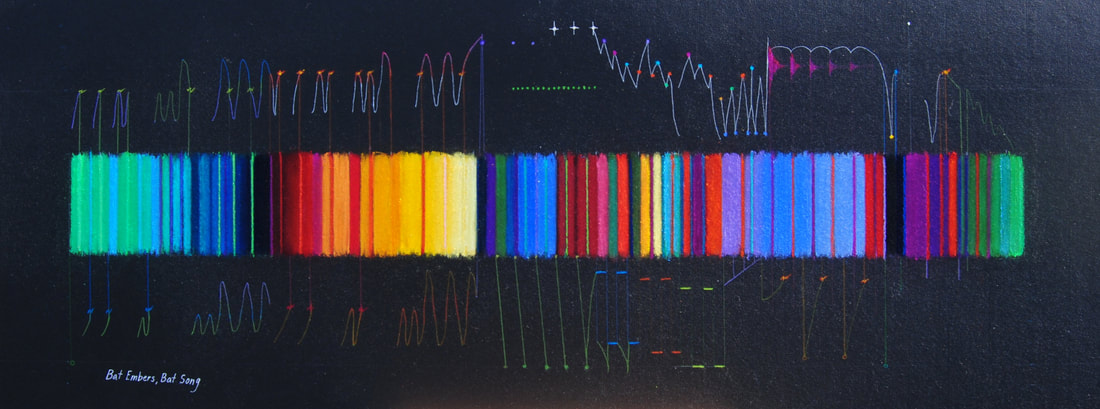Bat Embers, Bat Song is an artwork in the series Between Starshine and Clay, an exhibition of my work related to bat conservation. Between Starshine and Clay has a portfolio website of its own focusing on bat conservation issues and sharing incredible images of bats by Merlin Tuttle's Bat Conservation.
